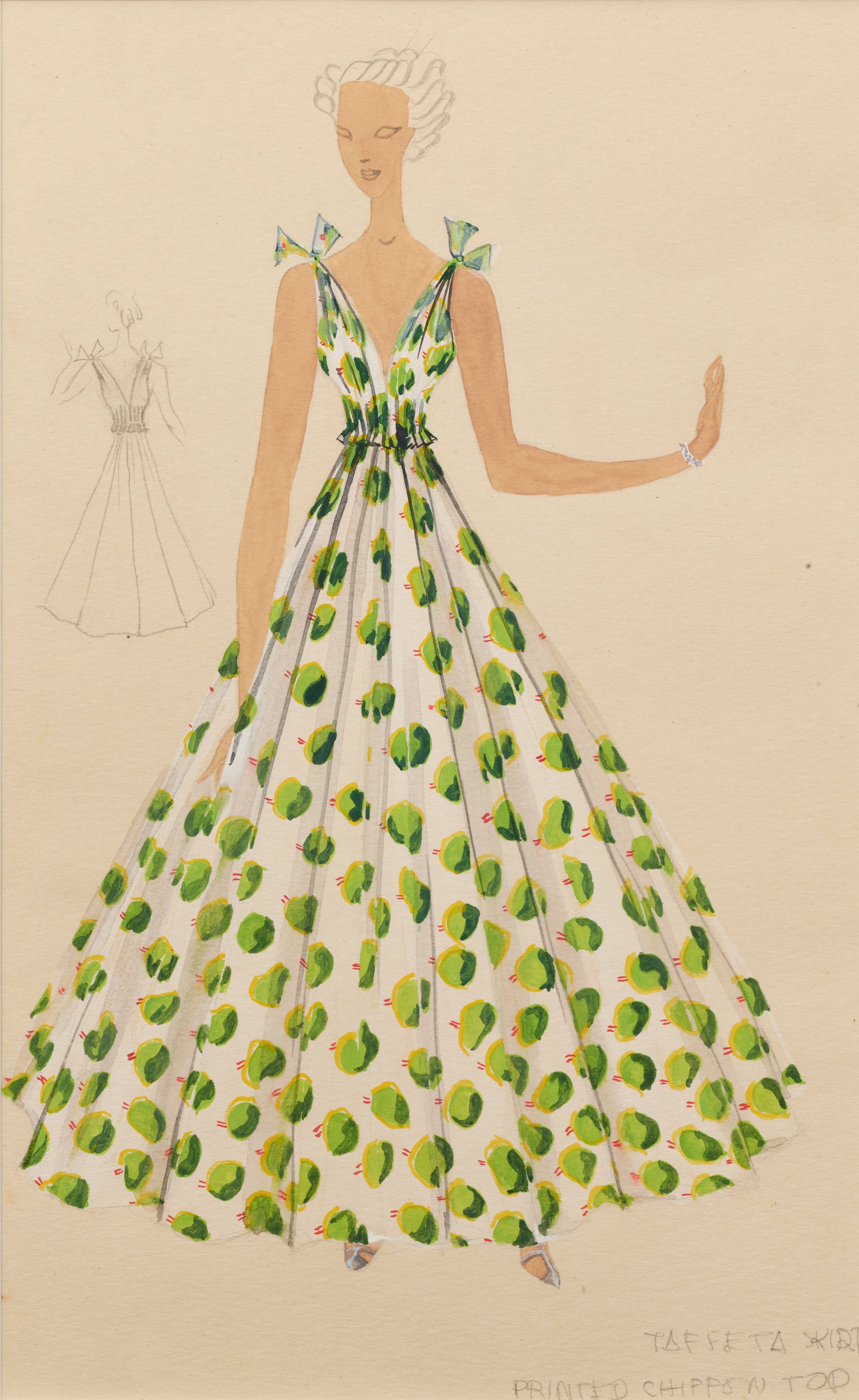Fashion Drawing: Two-Piece, Floor-Length Dress
Ray Kaiser
1938-1939
At twenty, Ray wrote to her mother declaring that she wanted to earn a living in “commercial art, either advertising or costume design.” Six years later, she wrote again saying that her friend Eleanor McClatchy “told me that ‘Fran’ (Francis Hayes) was to give a concert in February and wanted a costume, so I drew up several designs and sent them to Eleanor—who seemed to like them very much.”
- Medium:Ink, watercolor, and graphite on paper
- Credit Line:Image courtesy of Eames Office
- Item:A.2019.2.030
Curatorial Notes
Ray did a series of fashion drawings with the figure’s hair uncolored, and her left arm attenuated at a right angle to the body with the hand raised vertically. This somewhat awkward pose was perhaps influenced by her studies with Hans Hofmann. It seems Ray returned to fashion illustration prior to leaving New York for Michigan and Cranbrook in 1940. Years earlier. Ray once told her mother she wished to become a fashion illustrator.
Here the slender figure wears a floor-length gown with an overall pattern of light and dark irregular green shapes, each with a tiny pink accent. At the upper left is a pencil sketch of the back view of the dress; in the lower right corner, a notation in Ray’s distinctive handwriting: “printed chiffon top” and “taffeta skirt”. Mixing fabrics like this—one semi-sheer (chiffon) and the other a little heavier, shiny, and opaque (taffeta)—would give this dress, if actually made, an interesting contrast of textures and varied light reflection (chiffon absorbing light, and taffeta reflecting it).
— Dale Carolyn Gluckman
Here the slender figure wears a floor-length gown with an overall pattern of light and dark irregular green shapes, each with a tiny pink accent. At the upper left is a pencil sketch of the back view of the dress; in the lower right corner, a notation in Ray’s distinctive handwriting: “printed chiffon top” and “taffeta skirt”. Mixing fabrics like this—one semi-sheer (chiffon) and the other a little heavier, shiny, and opaque (taffeta)—would give this dress, if actually made, an interesting contrast of textures and varied light reflection (chiffon absorbing light, and taffeta reflecting it).
— Dale Carolyn Gluckman
